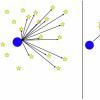In this protocol, nicotinamide riboside (NR) is used to weaken muscles temporarily to enhance the impact of exercise, while also stimulating mitochondrial quality control.
Method: High dosing with NR precursors and exercising about an hour later with weights less than normal—generally substantially less.
Dosage: I’ve used up to 2 grams of nicotinamide and 5 grams of ribose. This is equivalent to more than 4 grams of nicotinamide riboside, with the advantage that it doesn’t have to be broken down first and thus the onset doesn’t take hours. This is a large dose and I suggest that one work up to it.
Frequency: Once a week to allow NAD levels to drop and for mitochondria to proliferate. I did try this 4 days in a row initially, and regretted it as it took me over a week to recover.
Results: I’ve found that by using weights with only one-half to one-third of what I can lift with C60, I’m getting better results.
Rationale: NR efficiently raises the ratio of NAD(+)/NADH, which sets the mitochondrial quality control process running. Mitochondria are divided into minimal size (which is inefficient for ATP production). Exercising forces mitochondria into high (though inefficient) activity, which makes it easier for the cell to identify poor performers and mark them for destruction. So you potentially get muscle credit for lifting substantially less weight, plus you enhance the clearance of defective mtDNA.
References:
Nicotinamide-induced mitophagy: event mediated by high NAD+/NADH ratio and SIRT1 protein activation.
Here, we present evidence to show that the effect of nicotinamide is mediated through an increase of the [NAD(+)]/[NADH] ratio and the activation of SIRT1, an NAD(+)-dependent deacetylase that plays a role in autophagy flux. The [NAD(+)]/[NADH] ratio was inversely correlated with the mitochondrial content... Together, our results indicate that a metabolic state resulting in an elevated [NAD(+)]/[NADH] ratio can modulate mitochondrial quantity and quality via pathways that may include SIRT1-mediated mitochondrial autophagy . . . Removal of dysfunctional mitochondria requires the activation of autophagy coupled with ongoing mitochondrial fission.
https://www.ncbi.nlm...les/PMC3365962/
Bioenergetic role of mitochondrial fusion and fission
Several recent reports underscore the importance of mitochondrial fusion under conditions of high energy demand in mammals. It was shown that some cell stressors, including UV irradiation and several drugs that inhibit cytosolic protein synthesis, can trigger increased mitochondrial fusion in mouse embryonic fibroblasts, a process termed stress-induced mitochondrial hyperfusion. Mitochondria elongate and form a mesh of highly interconnected filaments in an Mfn1 and Opa1-dependent manner. Stress-induced mitochondrial hyperfusion is accompanied by increased mitochondrial ATP production. It is conceivable that fusion is necessary to optimize mitochondrial function in order to allow the cell to cope with increased energy demand during selective forms of stress.
http://www.sciencedi...005272812000692
Digestion and Absorption of NAD by the Small Intestine of the Rat
Perfused or intact intestine rapidly hydrolyzed NMN to nicotinamide riboside, which accumulated, but was not absorbed. It was slowly cleaved by an enzyme associated with the mucosal cells to nicotinamide, which was the major if not the only labeled compound absorbed.
http://nadh.wiki/wp-...-of-the-Rat.pdf





























































